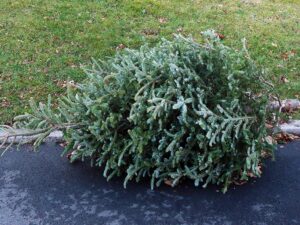Small fires aren’t that uncommon in the modern household or in any place with an oven and/or stovetop. According to fire safety experts, the No. 1 cause of all cooking fires is leaving the stove unattended. People often walk away from a hot stove “just for a minute,” and that “minute” can lead to significant home damage or worse.
Whether you’re preparing a meal or making a quick snack, practicing safe cooking in the kitchen can help keep members of your household safe.
Practice Safe Cooking
- Never leave your stove unattended while cooking. Stay in the kitchen while frying, grilling, boiling or broiling food. If you have to leave the room—even for just a moment—turn off the stove.
- Keep your cooking area free of combustible materials. Keep anything that can catch fire, such as food packaging, oven mitts and towels, away from your stovetop.
- Turn pot handles toward the back of the stove. This way, they can’t be bumped into.
- Keep cooking equipment clean. Crumbs in a toaster, built-up grease on the stovetop and excess dust behind your appliances are fire hazards.
- Never throw hot grease in the garbage. Let grease cool before disposing of it in the garbage. Never pour grease or oil down the drain.
- Avoid using kitchen appliances if you’re sleepy or have consumed alcohol. Unplug smaller appliances when not in use such as toasters, blenders and air fryers.
- Keep a fire extinguisher nearby. Make sure you have the correct type of extinguisher and know how to properly use it.
- Keep oven and microwave fires contained. Turn off the heat and keep the door closed until the flames are completely out.
Using a Fire Extinguisher
Fortunately, fire extinguishers can help fires from escalating if you have the right kind at the right place at the right time.
Keep at least one fire extinguisher near your kitchen, where most common house fires start. Another near the exit of your home can ensure a safer getaway if flames are close to your home’s entry points.
Selon l'Orange County Fire Authority (OCFA), les extincteurs polyvalents, ou ABC, sont recommandés pour un usage domestique. Le « A » signifie que l'appareil peut éteindre les incendies de bois, de coton et de tissu ; le « B » signifie que l'extincteur combat les incendies de liquides inflammables comme les sprays de cuisson ; et le « C » indique qu'il éteindra les incendies résultant de l'électricité sous tension.
Comment utiliser un extincteur
Les extincteurs ne sont pas difficiles à utiliser. L'OCFA propose des informations utiles et encourage les propriétaires à se souvenir de la technique PASS pour en utiliser un :
- Premplir la broche
- UNim at the base of the fire
- Squeeze the lever slowly
- Sweep from side-to-side
Cliquez ici pour regarder une vidéo pédagogique de l'OCFA sur la façon d'utiliser un extincteur.
Cliquez ici pour consulter les dépliants de l'OCFA sur la sécurité incendie, disponibles en chinois, anglais, farsi, coréen, espagnol et vietnamien.
If you cannot safely extinguish a fire, get outside quickly, close the door behind you to contain the fire, and call 9-1-1.
Pour plus de nouvelles du village, cliquez sur le tag « Quoi de neuf dans le village » ci-dessous.





